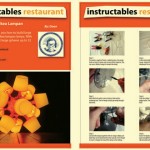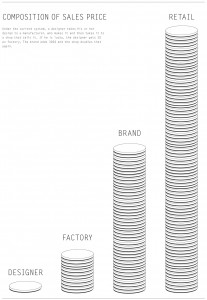OPEN DESIGN NOW

Standards enable translingual communica- tion. They enable Lego to be a profitable enterprise. They have been nice for kids, but also for designers and hackers. Stan- dardization wars consume a lot of energy for the sake of open market competition, leaving consumers with a new harvest of hardware plugs every season. What is a good balance between minimal standardization and maximum bandwidth for diversity and creativity? What comprises the architecture of digital co- creation, and distributed open fabrication, to share and sustain open design?
standards contents in Open Design Now:
Open Standards Design for Adaptation: A New Design Vocabulary Thomas Lommée Over the last 20 years, we have been witnessing the early developments of a networked economy that is operated by its interconnected participants. Decentralized information streams and sources have … Continue reading

IKEA HACKERS: THE LAMPAN Opportunities for ‘New’ Designers Bring Challenges for ‘Old’ Designers Daniel Saakes At the beginning of the 20th century, when standardization successfully separated design from manufacturing, a new profession emerged: the industrial designer. Industrial designers cater to … Continue reading
Mushon Zer-Aviv describes his efforts to teach open source design as an attempt to investigate why collaborative work combined with individual autonomy has not been common practice in design, as it is in open source software development. He discusses whether … Continue reading
Taking a critical look at current educational models, open design will involve a shift in the relationship between designers and potential users in terms of attitude, skills and approach. Caroline Hummels discusses the consequences of open design for the educational … Continue reading
The position of knowledge and expertise is changing radically, particularly in relation to how design literacy is affected when confronted with digital tools and media. Dick Rijken analyses design literacy on three levels – strategic, tactical, and operational – and … Continue reading
The roles of the designer, the client (or producer, or manufacturer) and the user are being shaken up in industrial practices that have, until now, been oriented mainly towards mass production. Stappers and his colleagues illustrate the contemporary occurrence of … Continue reading

The mediocracy of the middle classes dominates the current mass production design. In a world less controlled by branding and regulations, a new breed of designers can contribute to an altered, more honest economy. An interview with Dutch designer Joris Laarman, … Continue reading

Standards enable translingual communication. They enable Lego to be a profitable enterprise. They have been nice for kids, but also for designers and hackers. Standardization wars consume a lot of energy for the sake of open market competition, leaving consumers … Continue reading